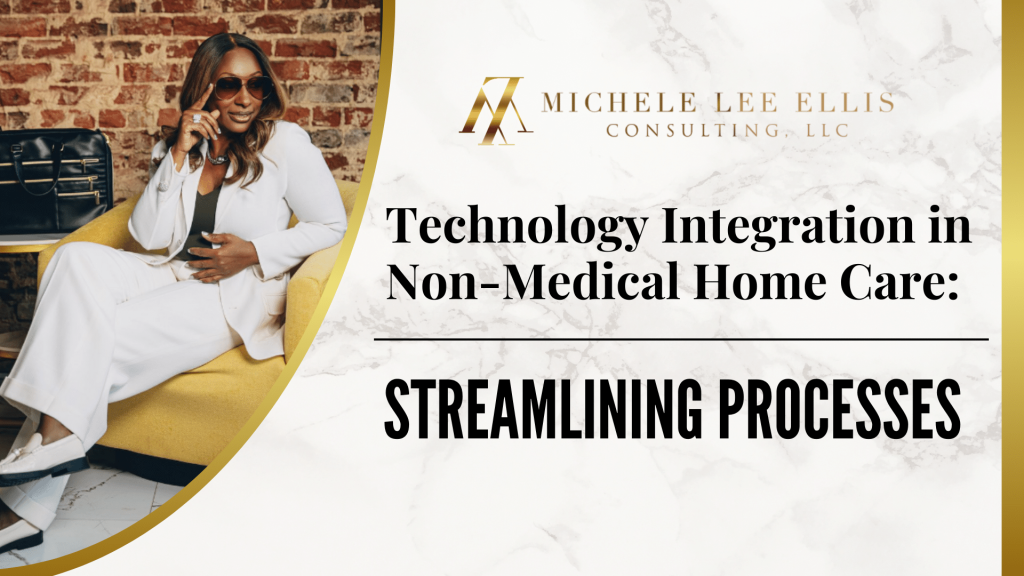
Technology Integration in Non-Medical Home Care: Streamlining Processes

Technology Integration in Non-Medical Home Care: Streamlining Processes
In the non-medical home care industry, integrating technology into daily operations is no longer optional—it’s essential. By leveraging modern technology, home care businesses can streamline processes, enhance service delivery, and improve overall efficiency. In this article, we’ll explore the benefits of technology integration in non-medical home care and provide actionable steps to implement these advancements in your business.
Benefits of Technology Integration
Better Scheduling and Time Management – Using scheduling software can make managing caregiver assignments much more efficient. These tools can automatically match caregivers with clients based on availability, location, and skill set, reducing scheduling conflicts and ensuring optimal coverage. For example, a digital scheduling system can send automatic reminders to caregivers and clients, improving punctuality and reliability.
Improved Communication – Technology enhances communication between caregivers, clients, and family members. Mobile apps and secure messaging platforms enable real-time updates, allowing caregivers to quickly report on a client’s condition or notify family members of any changes. This enhances transparency and trust within the care network. For instance, an app could notify family members when a caregiver arrives or leaves, providing peace of mind.
Accurate Documentation and Reporting – Care management software streamlines the documentation process. Caregivers can easily input data on a mobile device, reducing paperwork and minimizing errors. This ensures that client information is always up-to-date and readily accessible when needed. This technology can track daily activities, medications, and any changes in a client’s condition.
Efficient Billing and Payroll – Automated billing and payroll systems save time and reduce errors. By integrating these systems with scheduling software, non-medical home care businesses can ensure that caregivers are paid accurately and promptly, and that clients are billed correctly for services rendered. This reduces administrative burden and improves financial accuracy.
Steps to Integrate Technology in Non-Medical Home Care
Assess Your Needs – Begin by evaluating the specific needs of your home care business. Identify areas where technology can have the most significant impact, such as scheduling, communication, or documentation.
Choose the Right Tools – Research and select technology solutions that best fit your needs. Consider factors like ease of use, compatibility with existing systems, and the level of support offered by the provider.
Train Your Staff – Proper training is crucial to successful technology integration. Ensure that caregivers and administrative staff are comfortable using new tools and understand how they can enhance their work processes.
Monitor and Evaluate – Regularly assess the effectiveness of the technology solutions you’ve implemented. Gather feedback from caregivers, clients, and family members to identify areas for improvement and make necessary adjustments.
Take the Next Step with the Prelude Series
Ready to embark on your home care entrepreneurship journey?
Sign up for our Prelude series—a FREE program designed to introduce you to the home care industry and help you lay the groundwork for success.
